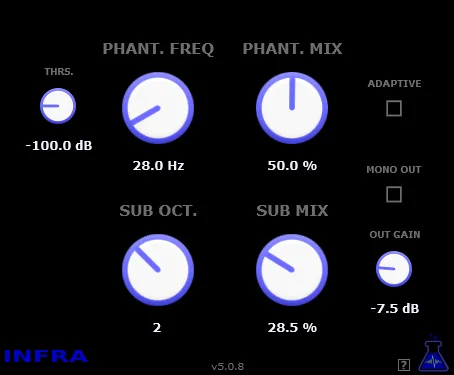Abstract Chamber: A Simple Reverb with an Abstract Space
Abstract Chamber by Signaldust is a reverb plugin that impresses with its simple interface but hides deep possibilities for creating unique spatial effects. Designed with an emphasis on long, modulated reverbs, this plugin aims to create a sense of a natural, yet abstract space around your sound. Forget complex settings and a multitude of incomprehensible parameters – Abstract Chamber gives you intuitive controls to shape exactly the space you imagine.
This plugin is ideal for musicians, sound engineers, and producers looking for a fresh approach to reverb. It can add atmosphere to vocals, deepen guitar parts, expand synthesizer pads, or create unusual soundscapes for experimental music. Its ability to generate long, evolving reverb tails makes it a valuable tool for ambient, cinematic, and atmospheric genres.
Key Features and Parameters
Despite its minimalist design, Abstract Chamber offers all the necessary tools for fine-tuning the reverberation space:
- Predelay: Allows you to control the time between the original signal and the beginning of the reverb tail. This helps to preserve the clarity of the attack of instruments or vocals.
- Reverb Time: Sets the theoretical reverberation decay time (RT60) at mid-frequencies. From short echoes to infinite tails – you have full control over the duration of the effect.
- Modulation: This parameter controls both the depth and speed of the internal modulation of the reverb tail. At low values, it mainly affects the depth, adding a slight “waviness,” while at high values the speed increases, creating a more pronounced trembling or “defocusing” of the sound. Experiment with values around 60-70% with a reverb time of 6-10 seconds for interesting results.
- LF Damp (Low Frequency Damping): Controls the cutoff frequency for damping (absorption) of low frequencies in the reverb tail. Allows you to remove “mud” or hum at the lows.
- HF Cutoff (High Frequency Cutoff) and HF Decay (High Frequency Decay): These parameters are responsible for damping high frequencies. HF Cutoff determines the frequency above which damping begins, and HF Decay – the intensity of this process, affecting how quickly high frequencies disappear from the reverb tail. This allows you to imitate the absorption of sound by different materials and shape the “brightness” or “darkness” of the space.
- Output Level: Overall volume control of the plugin’s output signal.
- Mode Switch: Choose between two main operating modes:
- Insert Mode: Mixes the processed (wet) signal with the original (dry) signal at the output. Ideal for using the plugin directly on an instrument or voice track.
- Send Mode: Only the processed (wet) signal is present at the output. This mode is used when working with sends (send/return) on AUX buses, where you control the amount of “wet” signal added to the “dry” signal on the main track.
Simplicity and Efficiency
The main advantage of Abstract Chamber is its accessibility. The interface is not overloaded, allowing you to quickly navigate and experiment with sound. At the same time, the set of parameters is sufficient to achieve a wide range of reverberation effects – from subtle deepening to creating large, floating sound canvases. Modulation adds life and movement to the reverb tail, preventing static and creating a feeling of “breathing” space.
Whether you’re creating music in the style of ambient, electronic music, rock, pop, or experimenting with sound design, Abstract Chamber can be a valuable addition to your plugin arsenal. It offers a fresh, non-standard reverb sound that goes beyond standard room emulations.
Try Abstract Chamber and discover new dimensions of space in your music!



